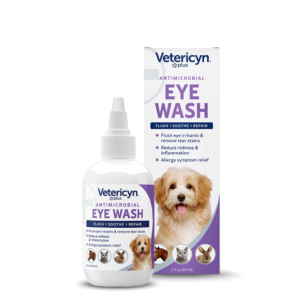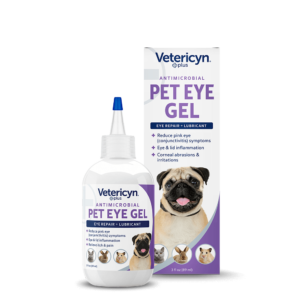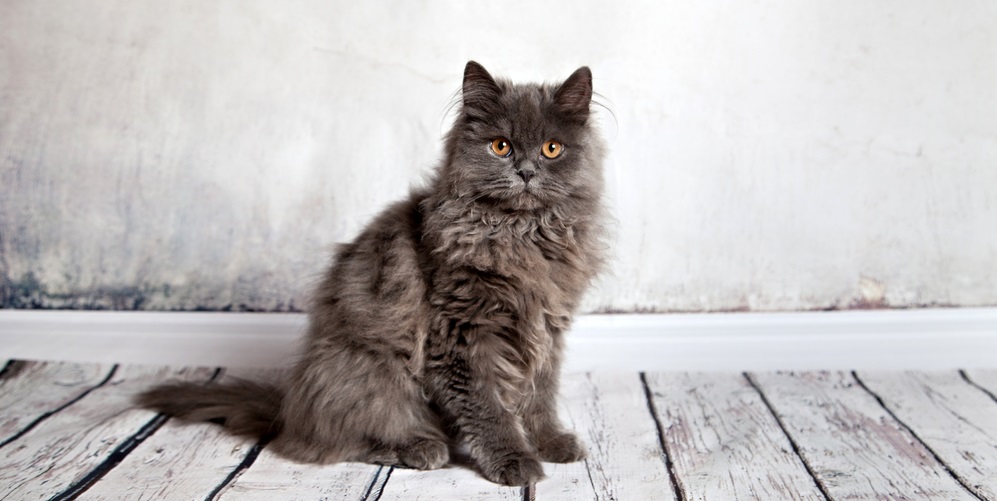Updated 7/15/2025
Your cat’s eyes are more than just cute and colorful—they also make it possible to see at night and express how they feel. Whether through slow blinking eyes of admiration, or thin pupil slits ready for a confrontation, their eyes make it easy to determine your kitty’s mood.
In some cases, your cat’s eyes can also indicate if a health issue is afoot. A cat can’t say, “Hey, I’m not feeling so hot right now,” but red eyes are a clear sign of an issue.
Out of all the cat eye problems, red eyes are one of the more glaring and common issues. So, what does it mean when a cat’s eyes are red?
There are many reasons a cat’s eyes can redden and an equal number of ways they can be treated. In this short guide, we’ll explain some of the potential reasons behind red eyes, as well as the best ways to treat them.
The Causes Behind Red and Bloodshot Eyes
First things first: if you’re asking yourself, Why are my cat’s eyes red? It’s important to make an appointment with a veterinarian who can correctly diagnose the problem and prescribe treatment.
But if you want to get prepared before your appointment, get acquainted with the most common potential causes:
- Conjunctivitis – Conjunctivitis, also known as pink eye, is the most common cause of red eyes in cats.1 The conjunctiva is the clear, protective, lubricating cover of the inside of the eyelids and surface of the eye.1 Usually the result of a bacterial or viral infection, conjunctivitis causes symptoms including excessive winking, watery eyes or clear or dark fluid discharge, and swollen eye tissue. This can be extremely irritating and itchy for the cat.1
- Bacterial Infections – In cats, bacterial conjunctivitis is typically caused by either Chlamydophila or Mycoplasma.1
- Viral Infections – Feline Herpes Virus is a common culprit, especially in kittens, whose immune systems are more susceptible to upper respiratory infections. Runny nose, sneezing, eye inflammation, dry eyes, and cat eye discharge are all potential indicators of a viral infection.
- Allergies – Just like humans, our furry friends can develop allergies to environmental irritants. Persistent sneezing and itchy, red eyes are potential indicators.2 Dust, pollen, mold, and mildew can all affect cats just as they do their owners. Maybe you’ve wondered why your cat’s eye is swollen and red. There’s a chance it was exposed to an irritant.
- Irritants – Cigarette smoke, cleaning products, perfumes, and even onions may irritate your cat’s eyes. An owner must be mindful of whether their cats are around when they smoke indoors (or really like onion soup).
Indoor Or Outdoor?
Is your feline an indoor or outdoor cat? It’s important to note that an indoor cat will not encounter the same dangers as one who ventures outside.
Cats, like many other animals, live close to the ground, which can expose them to various problems. Because they’re also curious, their explorations might lead them into encounters with:
- Pollen
- Plants
- Grass
- Bees
- Other animals
- Pokes or scrapes
It’s an adventure outside, but sometimes it comes at a cost. Even the most agile and healthy of cats can have an unexpected bump or run-in with something unexpected. If you let your cat venture outside, it may be more difficult to track the specific source of their symptoms.
Diagnosing Red Eyes
If your cat has a red eye, it’s essential to consult a veterinarian, as some eye issues are emergencies.
The symptoms are similar, but a veterinarian can run tests to determine the cause of the eye condition.
They’ll conduct a comprehensive physical exam, as eye problems may be a sign of a systemic disease. Your veterinarian will also check for dry eye (i.e., insufficient tear production), an ulcer on the clear surface of the eye, and elevated eye pressure. Veterinarians also look at the retina and optic nerve using a special instrument called an ophthalmoscope. None of these tests hurt your cat, and they take only a few minutes to complete.
Treatment for Red Eyes
Once the cause has been determined, your veterinarian will lay out the treatment steps. These could include any of the following:
- Using medication – The vet may prescribe topical or oral antibiotics, antivirals, or other ointments. It’s essential to follow their instructions to prevent symptoms from resurfacing or worsening.
- Cleaning the house – Cleaning up around the house is a simple and easy way to prevent a cat from coming into contact with dust or other debris while their eyes are still irritated. But try and do it when your kitty is in a different room. Otherwise, cleaning products might get on their paws or otherwise irritate them.
- Clearing the eyes – Clearing out the affected eye is important. Sometimes it’s as simple as gently flushing the eye. If you want to help but can’t consult the vet yet, you might wonder how to treat your cat’s eye infection at home. The nontoxic Vetericyn Plus® Antimicrobial Eye Wash is a safe option for relieving irritation and itchiness. Of course, be sure to apply the product correctly to avoid further eye injury. Do not use products meant for humans or other species on cats. They may be toxic for your cat.
- Quarantining – If you have a multi-cat household, isolating the symptomatic cat can keep the redness from spreading to other cats. Until the veterinarian’s tests have come back, there’s no way to know if the issue is contagious to other pets.
The final step to healing? Give your cat some extra TLC. Whether your kitty is a cuddler, a loner, or a rambunctious ball of energy, they’ll always require love and attention.
If your kitty’s symptoms don’t improve or get worse, or if they develop other symptoms, consult your veterinarian.
Clear Eyes with Vetericyn
Observing your cat’s habits and cleaning rituals can give you some insight into the potential causes of red eye and help prevent future bouts. There’s no telling what your cat might come across, but if you’re mindful of their environment and habits, it shouldn’t be too difficult to catch the first sign of redness.
While it’s always a good idea to consult with your vet, gently flushing your cat’s eyes with cat eye drops can reduce irritation and make your cat more comfortable while you wait for a diagnosis. This non-stinging, non-toxic, calming solution can help you safely remove dirt and debris, providing relief from pain and itch, while giving your cat a head start in the fight against red eyes.
Browse the rest of our cat care products today.
 Reviewed by Dr. Kathy Adamson
Reviewed by Dr. Kathy Adamson
Dr. Kathy Adamson earned her bachelor’s degree from the University of Notre Dame and her Doctor of Veterinary Medicine degree from the University of Wisconsin-Madison School of Veterinary Medicine.
She completed a one-year small animal medicine and surgery internship at the North Carolina State College of Veterinary Medicine. Alongside her studies, Kathy worked in a research lab, contributing as an author and co-author to various journal articles.
She has also pursued medical writing and editing certification through the University of Chicago Graham School. Currently, she runs KMA Veterinary & Medical Writing, a freelance medical writing company, serves as the Digital Content Manager for the Greater Chicago Area Chapter of the American Medical Writers Association, is a member of the AMWA Communications Committee, and enjoys writing about healthcare topics for people and their cherished pets.
![]() https://www.linkedin.com/in/kathyadamsondvm/
https://www.linkedin.com/in/kathyadamsondvm/
Sources:
- Cornell Feline Health Center. Conjunctivitis. https://www.vet.cornell.edu/departments-centers-and-institutes/cornell-feline-health-center/health-information/feline-health-topics/conjunctivitis
- BondVet. Allergies in Cats: Common Allergens & Allergy Treatments https://ebusiness.avma.org/files/productdownloads/HouseholdHazards-En.pdf


